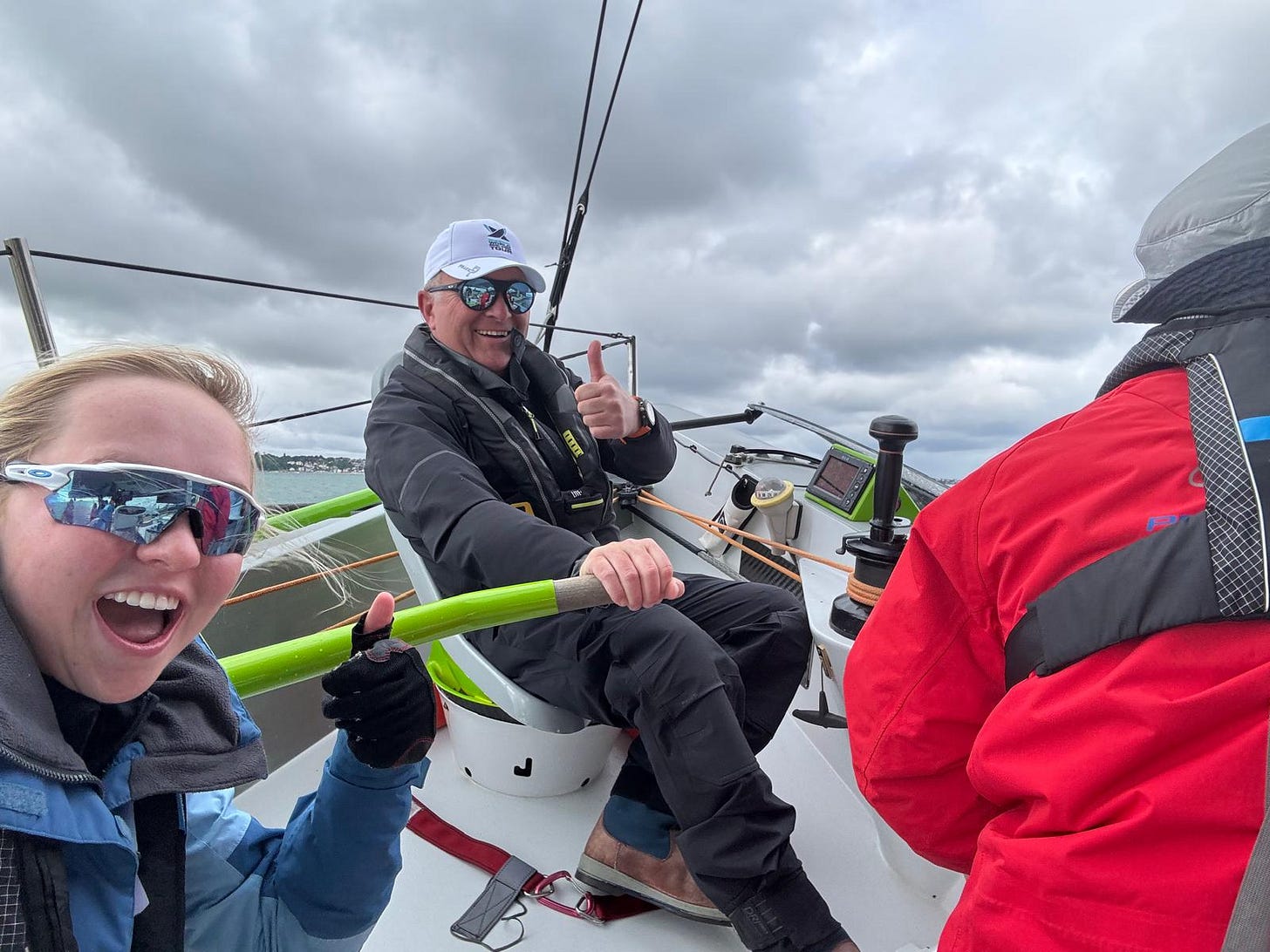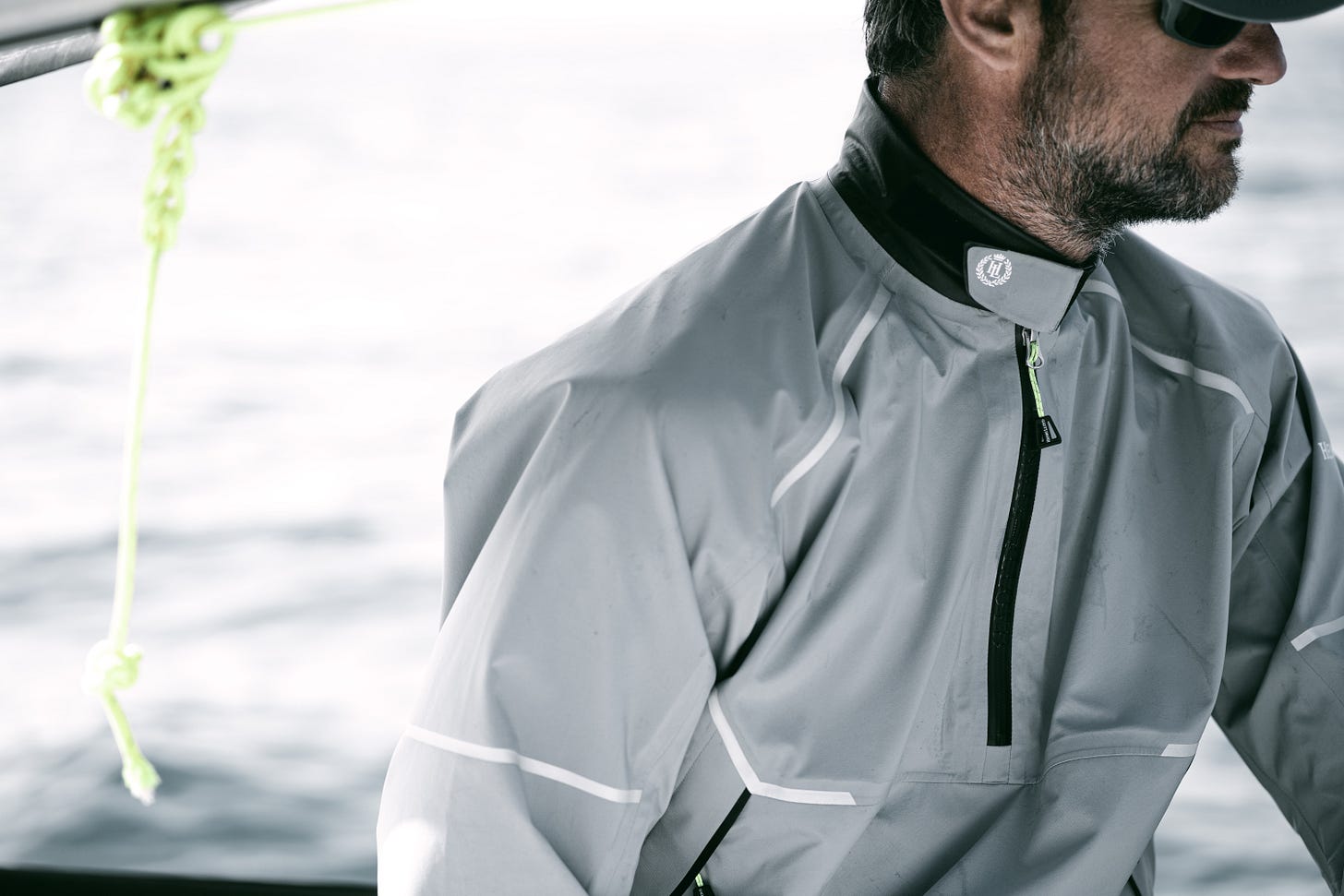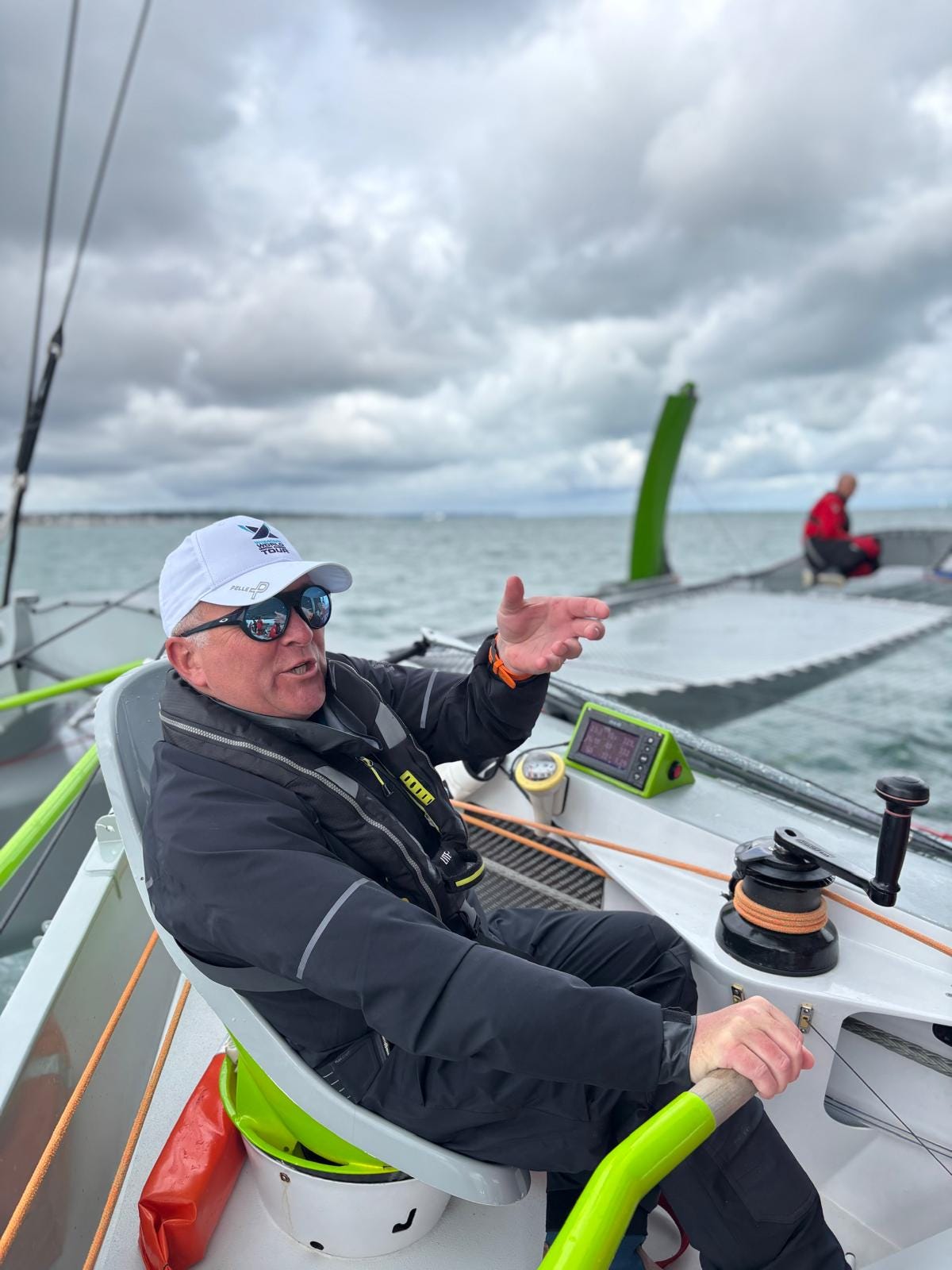
Independent reviews in the sailing world are rare. Too often, advertorials blur the line between honest opinion and sponsored content. That’s why it matters when seasoned sailors and journalists like Magnus Wheatley put new gear through its paces - without a script and without compromise.
This past summer, Magnus tested Henri-Lloyd’s Dri-Pro Salopettes and Dri-Pro Smock Top across a demanding calendar of events, from high-adrenaline MOD70 racing to rugged offshore passages in Scottish waters. Here’s what he found.

When the gear first arrived, Magnus admits he doubted whether something so light could really perform in harsh conditions. But out on the MOD70 Powerplay Zoulou - a 34-knot sprint machine - he was immediately impressed. Spray came hard and fast, but the Dri-Pro kit stayed protective, breathable, and flexible enough for the constant movement required on board.
“They felt like a second skin - something I’ve never experienced with foul-weather gear before.”
From monsoon-like conditions in the Scottish Isles to long days racing inshore, the Dri-Pro Salopettes proved to be a game-changer. Made with 100% recycled nylon, they offered remarkable flexibility and comfort while keeping him completely dry underneath. Compared to his usual kit, Magnus described them as lighter, less restrictive, and far more wearable for active sailing.
While the Smock Top performed well in wet conditions, Magnus noted that the neck and cuff seals require a snug fit to guarantee complete dryness. For sailors who prefer the feel of latex seals, he recommends looking at the Dynamic Dry Top for maximum waterproofing.

The gear wasn’t just tested on one type of boat or in one set of conditions. Across events like the Round the Island Race, the Round Mull Race, and even supporting a blind sailor’s circumnavigation of the Isle of Wight, the Dri-Pro range consistently delivered. Whether racing at speed, handling rough chop in a RIB, or enduring driving rain, Magnus stayed dry, warm, and able to perform when it mattered most.

Behind the performance is a story of innovation. As Henri-Lloyd’s Executive Chairman Knut Frostad explains, the Dri-Pro range was developed with sustainability at its core, using advanced Japanese fabrics that go beyond traditional membranes like Gore-Tex to meet stricter European environmental standards.
This forward-thinking approach ensures durability and performance while also addressing the future of sustainable sailing gear.

The Dri-Pro Salopettes and Smock Top aren’t just another set of foul-weather gear - they’re a serious investment in comfort, reliability, and performance.
Magnus sums it up best:
-
Flexible and light – they feel like a second skin.
-
Dependably dry – with seals done up correctly, they keep out the worst conditions.
-
Built to last – designed by sailors, for sailors.
“After a full season, I still have complete faith in the reliability of Henri-Lloyd’s Dri-Pro range. I’d happily spend my own money on them.”
With an offshore range on the horizon, the Dri-Pro collection has set a new benchmark for inshore and coastal sailing gear - combining cutting-edge design, sustainability, and uncompromising performance.











